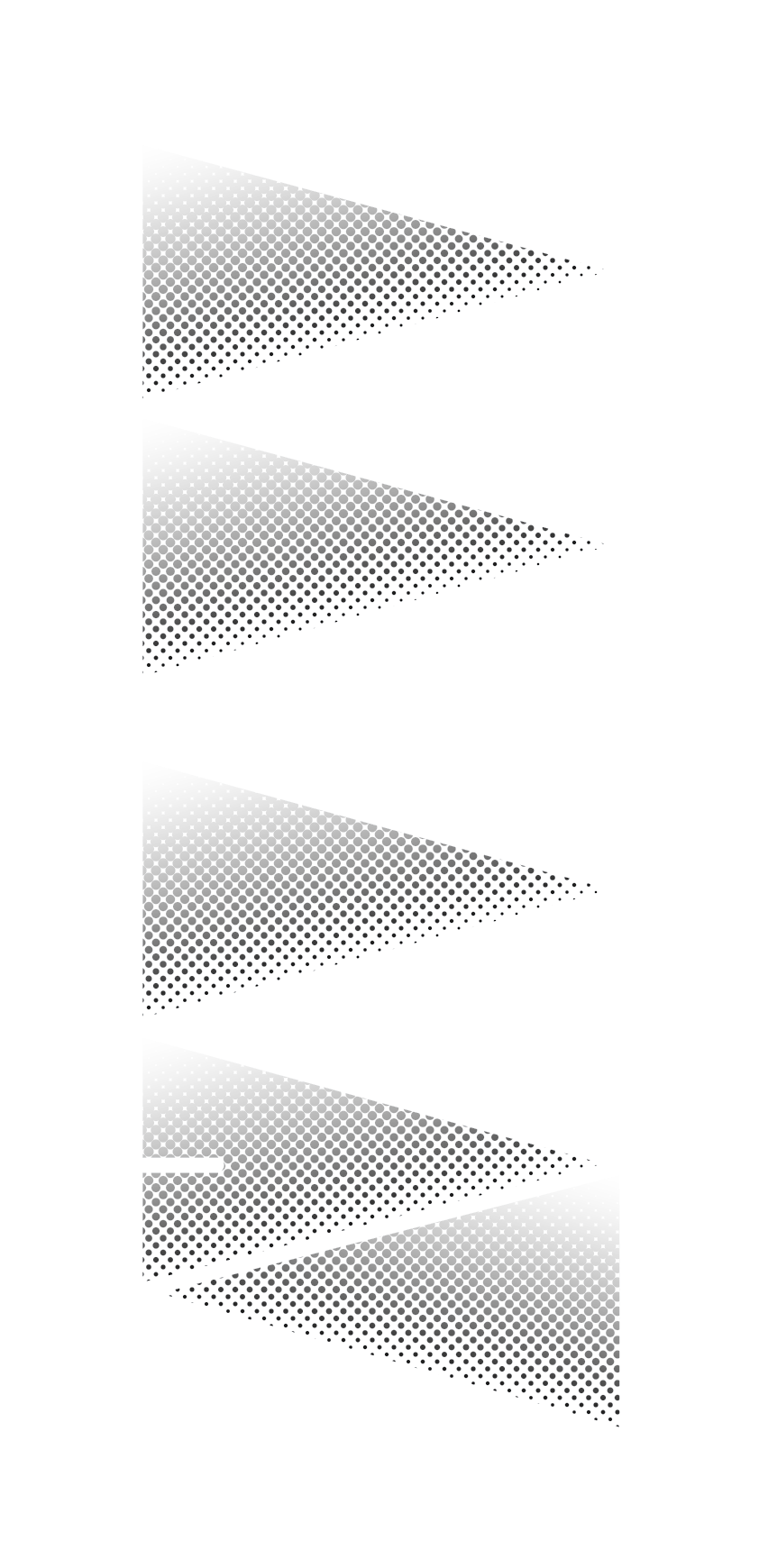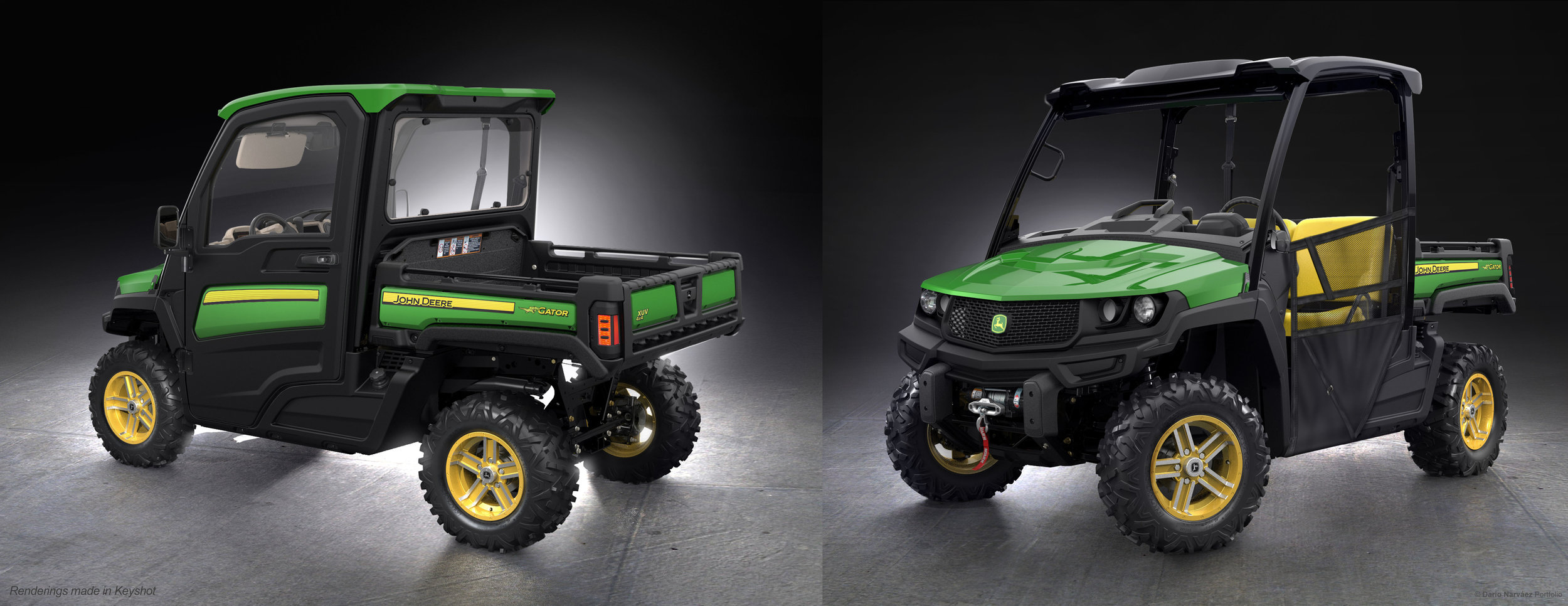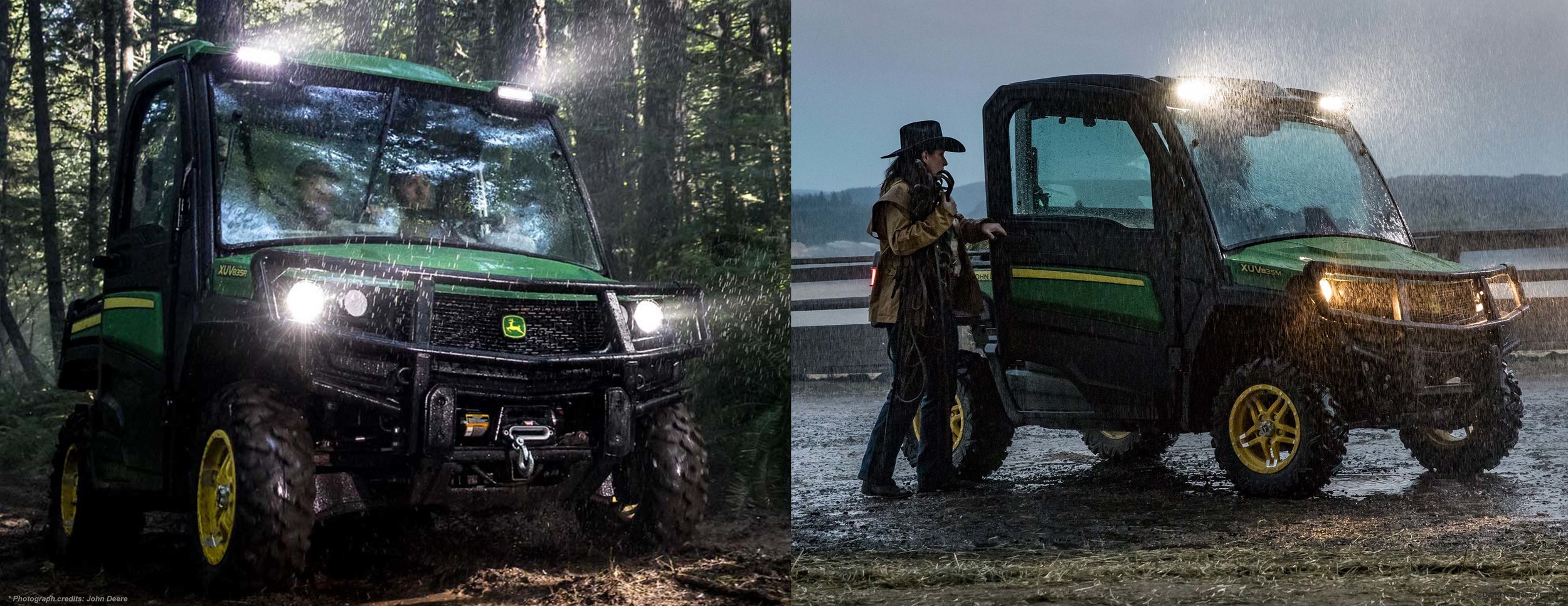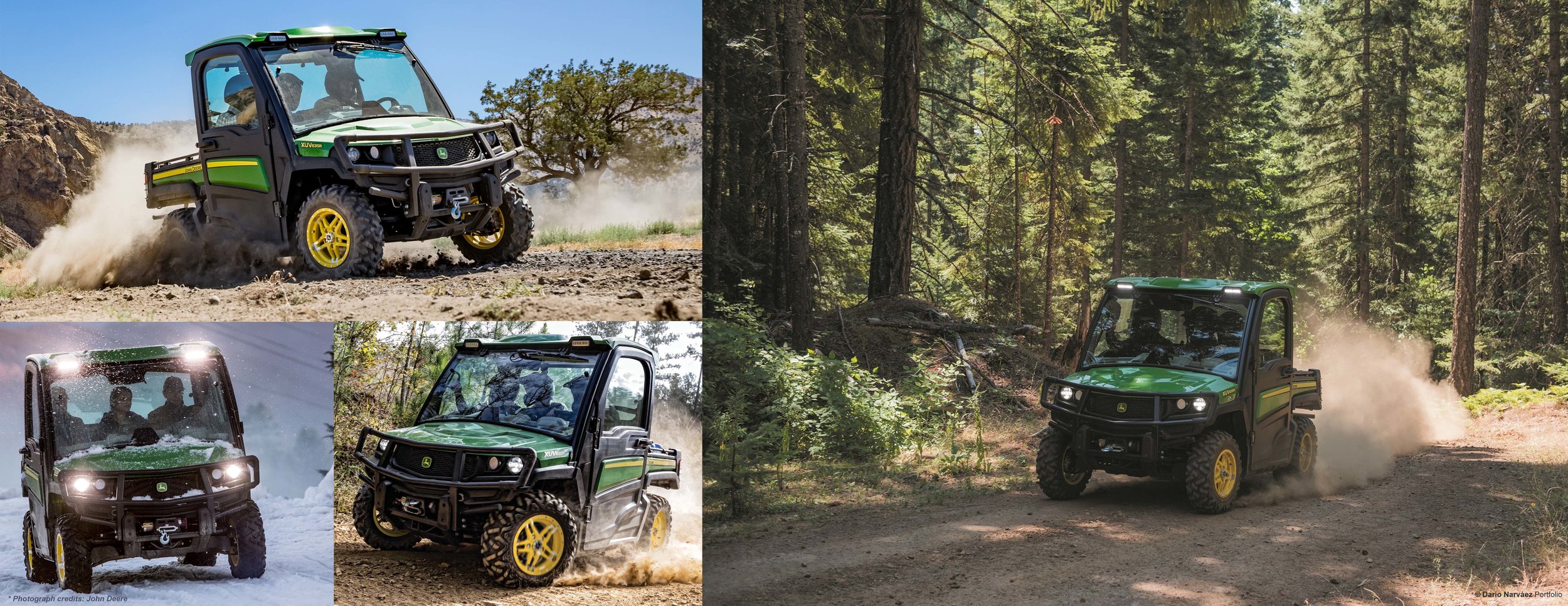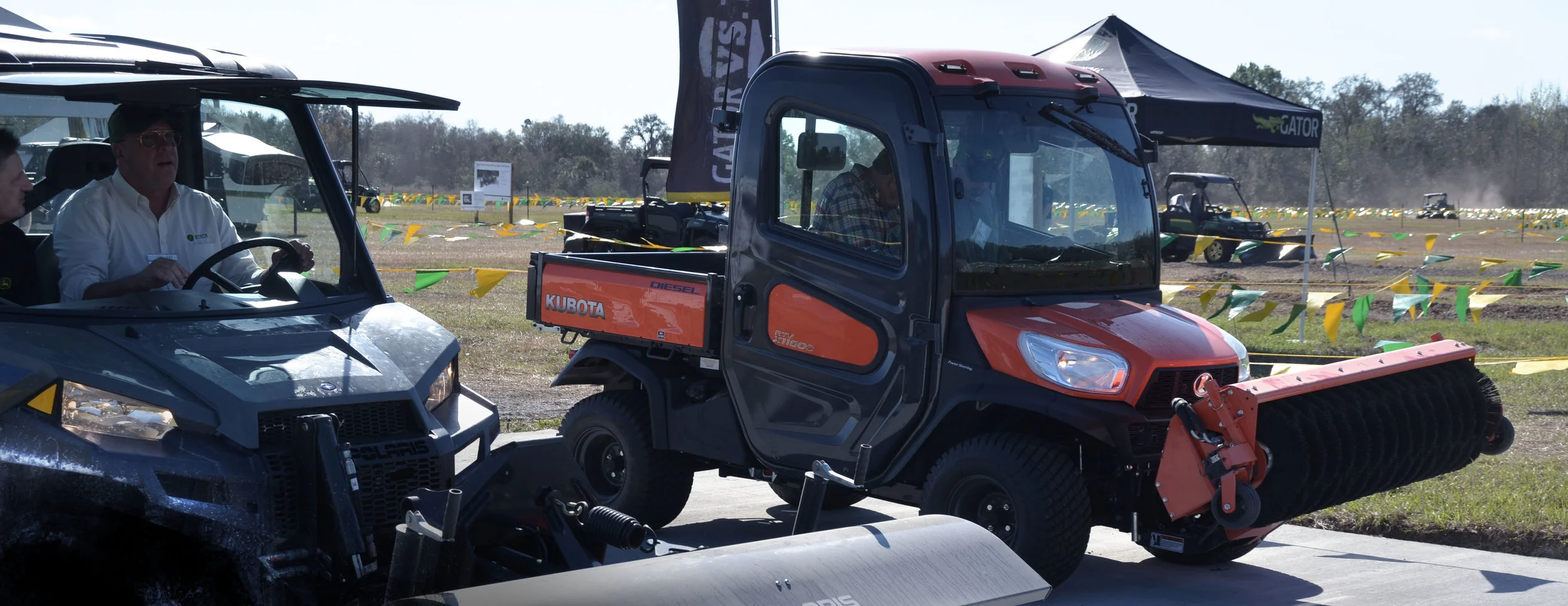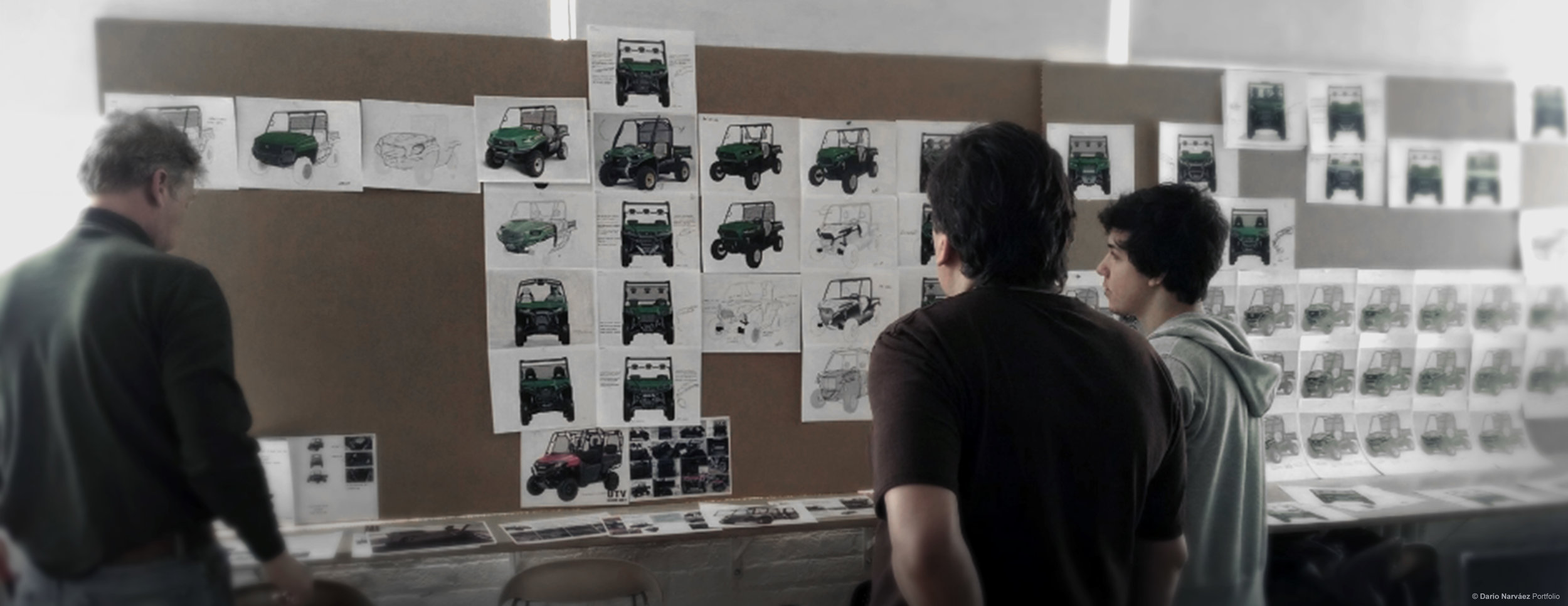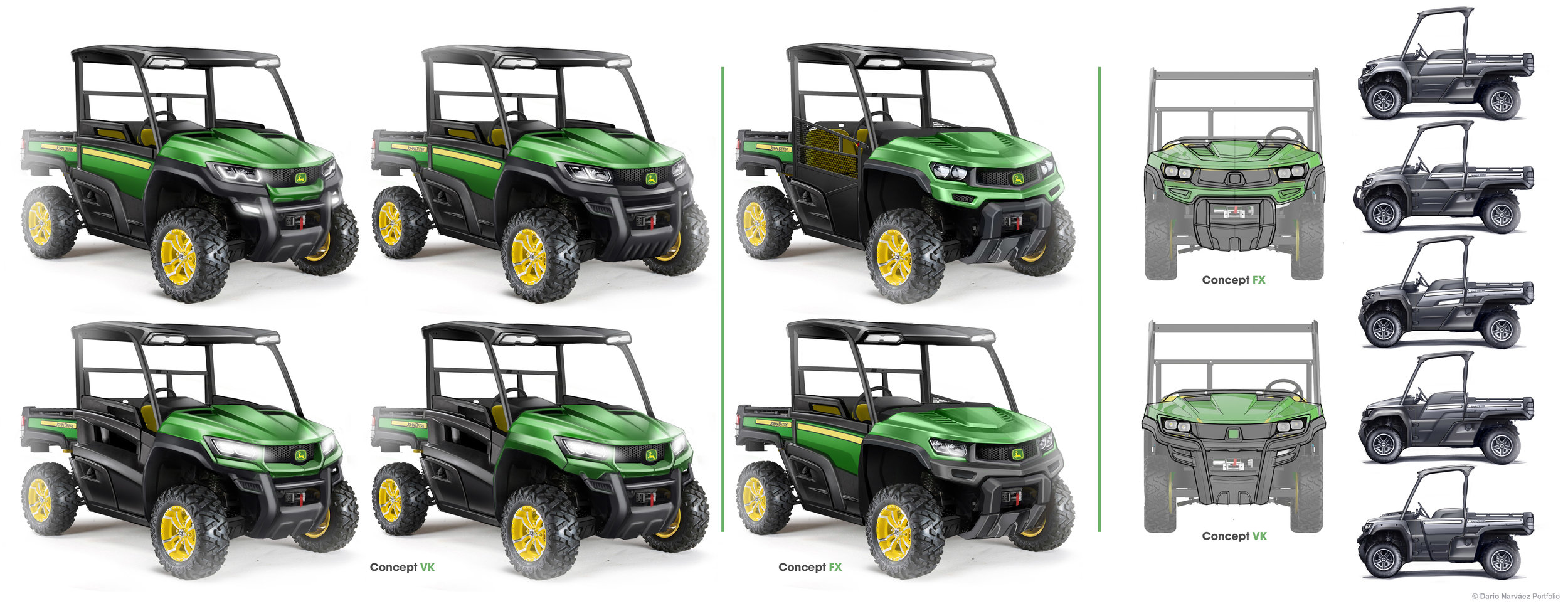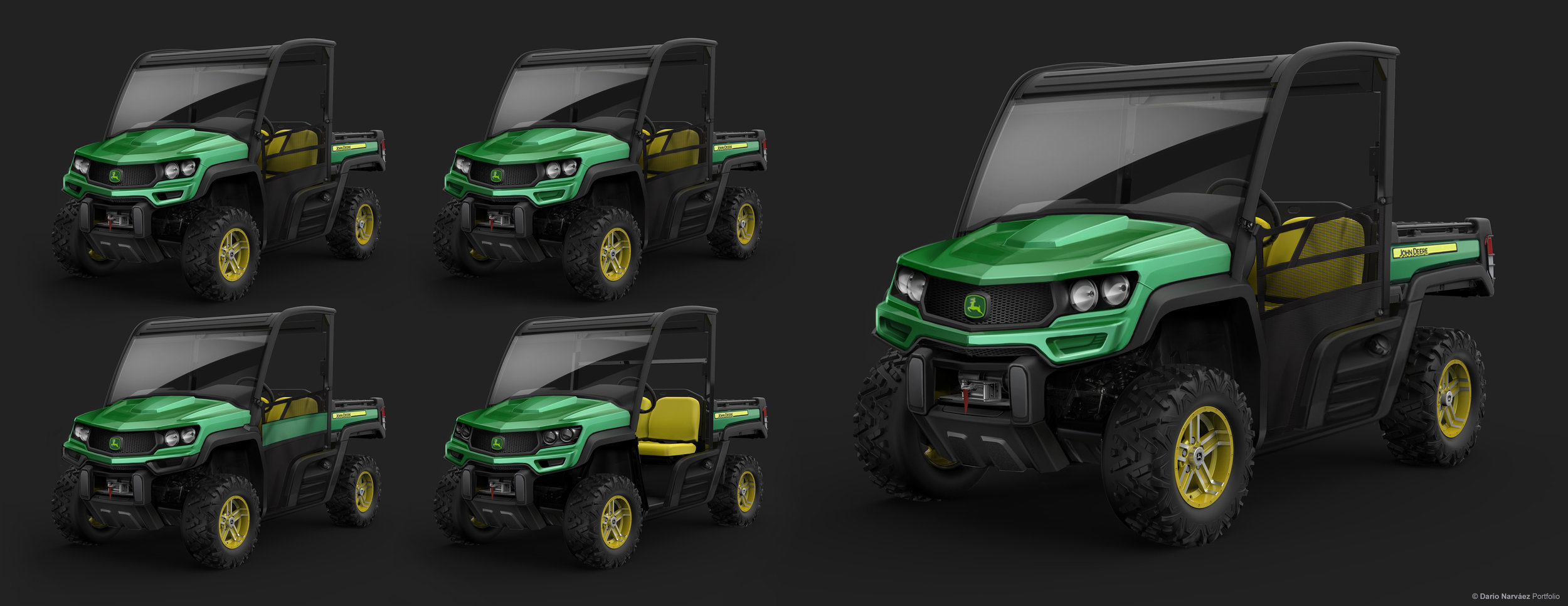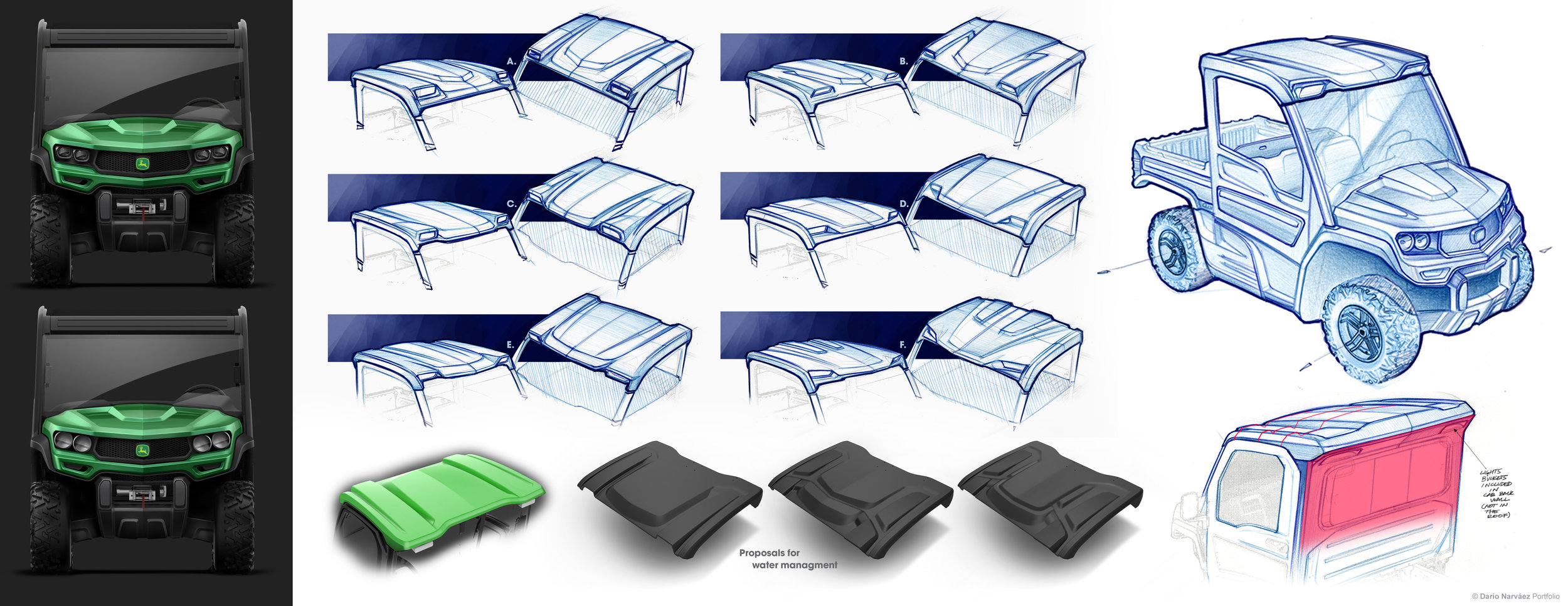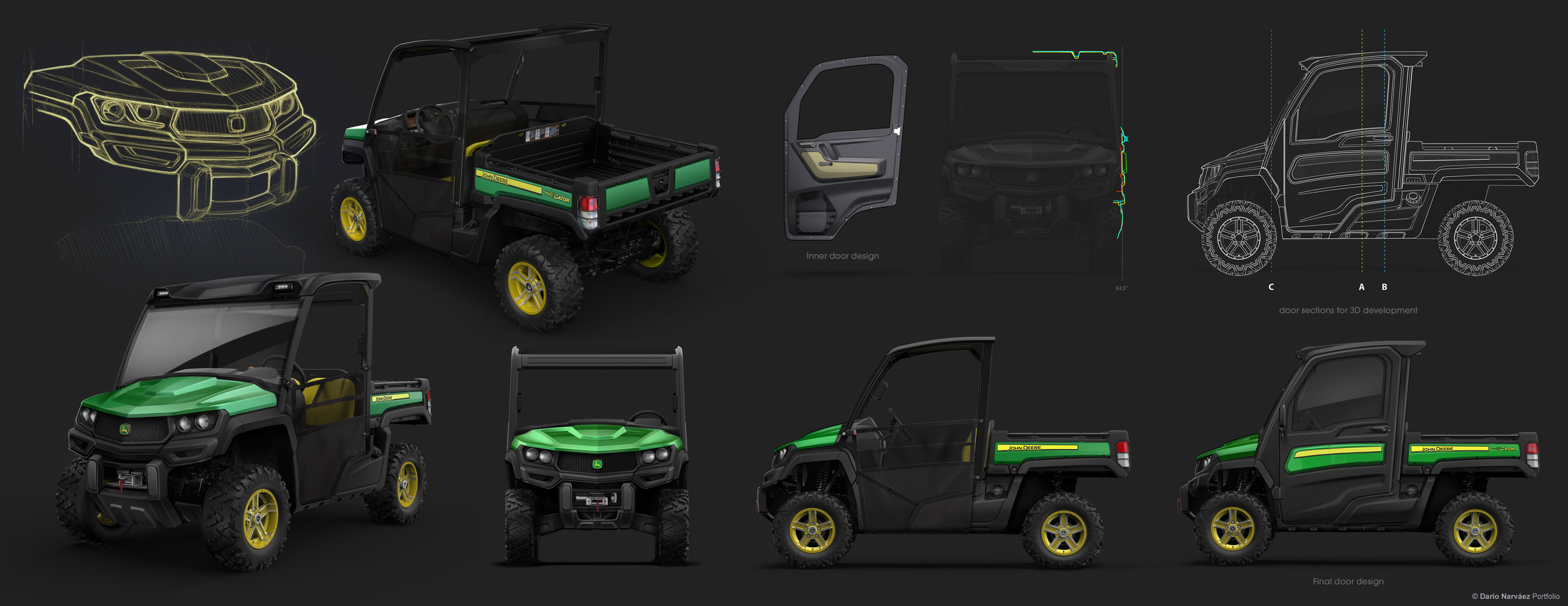An all doer
Client: John Deere (USA) / Project developed with the Curve ID Design Team
John Deere, a renowned American corporation specializing in the manufacturing of agricultural, construction, forestry machinery, heavy equipment, and lawn care equipment, approached us with a significant undertaking: to design the next generation of their Utilitarian Vehicles - Gators, a work that served as the foundation for creating the John Deere's Industrial Design Language - IDL document.
Utility vehicles like the Gator XUV 835 are versatile machines used in various industries and applications. They are commonly employed in agriculture for tasks like equipment transportation and field navigation, in construction sites for material hauling and worker mobility, and in landscaping and maintenance for groundskeeping and facility management. Additionally, utility vehicles are popular for recreational activities and outdoor adventures, as well as property and estate management.
The best crossover utilitarian vehicle
The first 3 seater UTV
The design scope included both exterior and interior (cabin), reusing previously designed cargo box, and considering multiple variants. This included a full cabin configuration with an HVAC system available in two interior specifications, and options without a cabin with half doors and net doors.
The design of the new Gator encompasses two distinct yet interconnected motivations: first, to create a Utility Vehicle that embodies functionality, efficiency, and customer satisfaction—a reliable tool for work and productivity. Second, to infuse a sense of excitement and leisure—a Recreation Vehicle that sparks joy and enhances recreational experiences.
